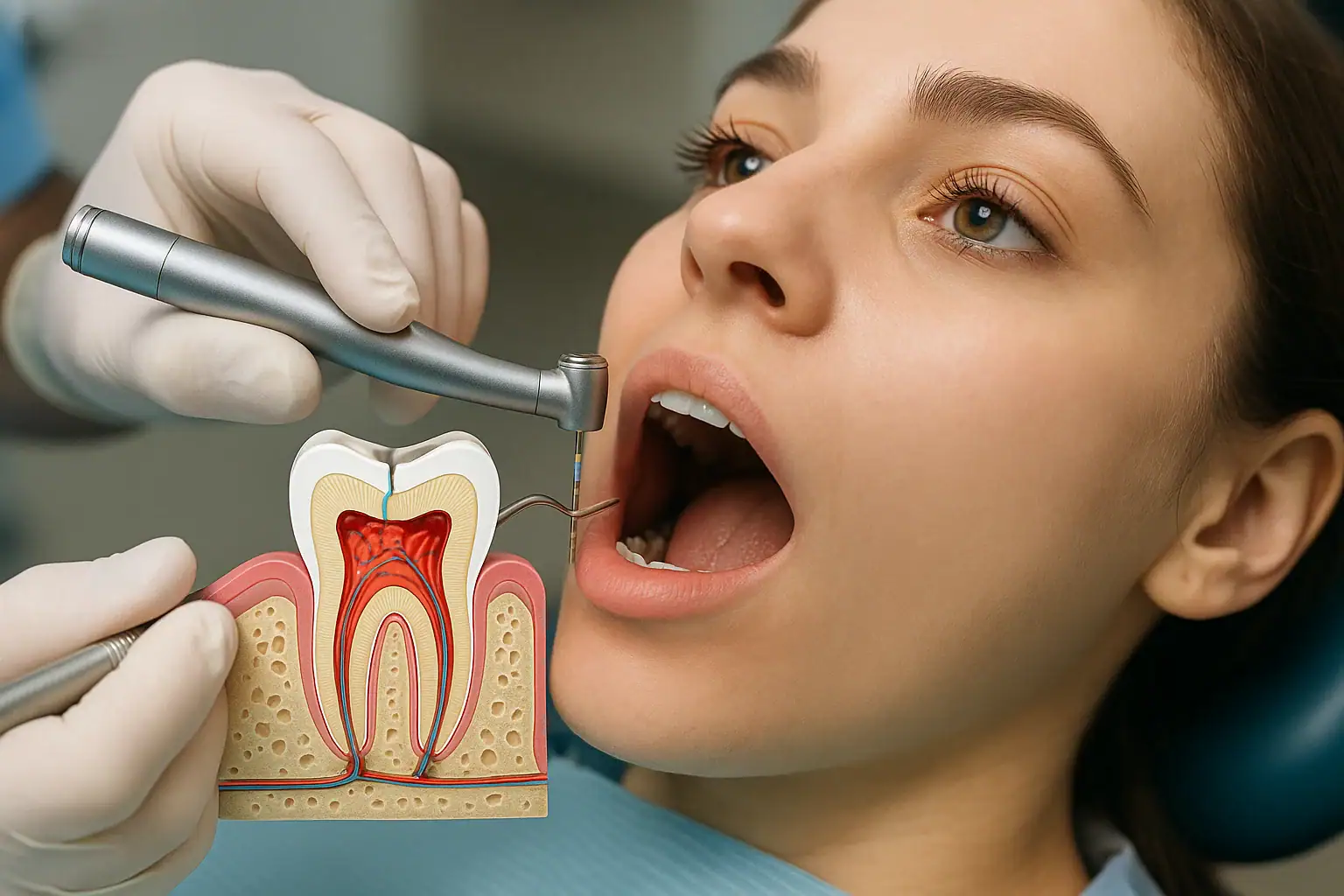Menu
Free Consultation

When people hear the words “root canal,” they often associate it with pain and discomfort. However, modern dental techniques have turned this once dreaded procedure into a relatively straightforward and pain relieving solution. A root canal is not something to fear it is a highly effective treatment designed to save your natural tooth and eliminate pain caused by infection or decay.
A root canal is a dental procedure used to treat infection or inflammation in the pulp of a tooth. The pulp is the innermost part that contains nerves and blood vessels. When damaged, it can cause intense pain and lead to abscess formation if untreated.
Early diagnosis can save your tooth. Common symptoms include:
If retreatment is necessary or if the infection is complex, treatment time can extend over 2–3 visits.
Pain is usually caused by the infection itself, not the treatment. Root canal therapy relieves pain, it doesn’t cause it.
Local anesthesia ensures the procedure is virtually painless.
Mild soreness or jaw stiffness is common and can be managed with:
Severe pain may indicate complications—see your dentist immediately if discomfort worsens.
| Tooth Type | Cost (No Crown) | Cost (With Crown) |
|---|---|---|
| Front Tooth | $300–$1,500 | $800–$2,500 |
| Premolar | $400–$1,800 | $1,000–$2,800 |
| Molar | $500–$2,000+ | $1,200–$3,500 |
Most dental insurance plans cover 50–80% of root canal procedures depending on your policy. Patients without insurance may consider:
Though root canals have a success rate over 95%, some risks include:
If a root canal fails, it can often be retreated. In more complex cases, an apicoectomy (surgical root-end resection) may be required.
Preserving your natural tooth through root canal therapy is often the best long-term solution for functionality and aesthetics.
With proper care, root canal-treated teeth can last a lifetime. Key success factors:
A root canal is a treatment to remove infected or damaged pulp from inside the tooth and preserve the natural tooth structure.
Typically, 30–90 minutes depending on the tooth and complexity.
Anywhere from $300 to $2,000+ based on the tooth type and restoration needs.
No. Local anesthesia makes the procedure painless. Most people feel relief from previous pain.
The infection can spread to surrounding tissues and bone, leading to an abscess, severe pain, and potential tooth loss.
While not always mandatory, a crown is highly recommended—especially for molars—to protect the treated tooth from fracture.
Despite its reputation, the root canal procedure is one of dentistry’s most effective and essential treatments. It relieves pain, saves natural teeth, and avoids the need for implants or bridges. Understanding the root canal process, potential costs, duration, and post-care tips empowers patients to make informed decisions.
If you’re experiencing persistent tooth pain or sensitivity, consult your dentist. Early intervention can mean the difference between saving or losing a tooth.
